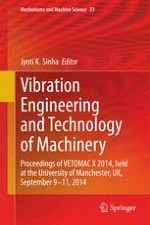2015 | OriginalPaper | Buchkapitel
Vibration Control of Semi-active MR Seat Suspension for Commercial Vehicles Using Genetic PID Controller
verfasst von : S. Gad, H. Metered, A. Bassuiny, A. M. Abdel Ghany
Erschienen in: Vibration Engineering and Technology of Machinery
Aktivieren Sie unsere intelligente Suche, um passende Fachinhalte oder Patente zu finden.
Wählen Sie Textabschnitte aus um mit Künstlicher Intelligenz passenden Patente zu finden. powered by
Markieren Sie Textabschnitte, um KI-gestützt weitere passende Inhalte zu finden. powered by
